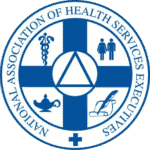In late December, two new COVID-19 vaccines were approved by the FDA. It was, literally, a shot in the arm for a country still ravaged by viral spikes. For rural communities, the relief couldn’t come quickly enough, as many community hospitals and FQHCs are being inundated with a new influx of cases. Rural counties in Kansas, Nebraska, Montana, and South Dakota are all experiencing a surge.
Even though the vaccine serves us with a ray of hope during this crisis, there is an extensive amount of logistics required to distribute these treatments. What is the status of the roll-out, and how will it affect your community facility?
COVID-19 Vaccine and Rural Communities
According to the National Association of Community Health Centers (NACHC), the organization is collaborating with the Centers for Disease Control and Prevention (CDC) and the Association of Immunization Managers (AIM) to distribute the new COVID-19 immunization. They are also allocating more than 3.5 million doses of this year’s influenza vaccine to community health centers to help reduce the chances of a “twindemic” of coronavirus and flu this winter.
The NACHC suggests the flu vaccine is a good opportunity for a dress rehearsal before the COVID-19 vaccine arrives. In a recent letter to health centers and Primary Care Association partners, the NACHC suggested, “Administering flu vaccines can be used to check and test policies, procedures, and workflows.”
The CDC has already listed its guidelines that show health centers as key to vaccine distribution to the underserved and rural communities. This patient population is at increased risk for the virus, so the NACHC is urging FQHCs and other community providers to work with local and state health departments to be pre-screened, credentialed, trained, and accepted into the COVID-19 Provider Enrollment and Ordering Management System. The CDC published a vaccine planning guide to help providers navigate the process of engaging in the distribution process.
Despite the planning, the reality is that we simply have never been through a similar process. Healthcare providers and administrators are in uncharted territory, and the NACHC suggests there are many logistical hurdles ahead, including:
- Staffing coordination of the more than 50,00 outreach staff, nurses, and medical assistants ready to organize their distribution efforts. To vaccinate all current health center staff and patients, it would take around 60 million doses.
- There is vaccine hesitancy from many members of the rural community who view government immunization programs with skepticism. Messaging needs to be developed now to address these issues to improve acceptance of the COVID-19 vaccine in our communities. Ironically, at a time when many patients are staying home and avoiding preventative care, this immunization requires two in-person visits for the first and follow-up shots.
- It appears logistics and storage are very serious issues for the vaccine distribution, along with management of supplies like needles, syringes, and PPEs).
Despite these challenges, we know that the U.S. community health center community will prevail and meet the challenges in the weeks and months ahead. If your organization needs additional staffing during this time, talk with UHC Solutions to find out how we can help.





